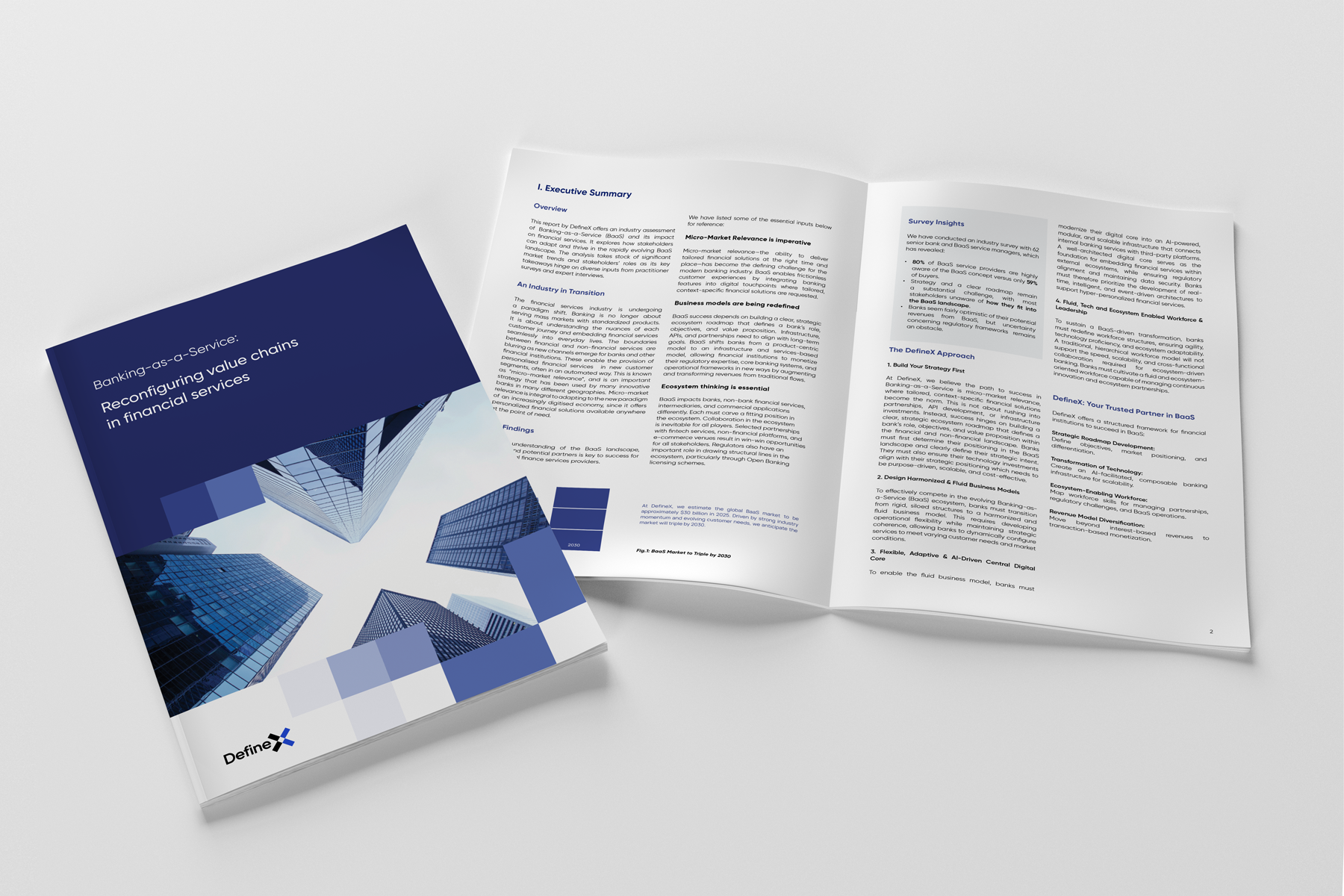 Financial Services
Financial Services
- Insights
- Financial Services
- Article
The Integration of Generative AI in Banking

Staying ahead of the curve in the fast-paced world of banking and finance is crucial for long-term success. Among the myriad of topics that demand our attention, one that is undeniably at the forefront is generative AI. At its core, it is a subset of AI that excels at generating new content – be it text, images, video, or even financial data. By analyzing existing patterns and data sets, generative AI has emerged as a transformative force. In this article, I would like to delve into this remarkable technology and explore how it can elevate customer experiences and boost sales in the ever-changing financial landscape.
In today’s dynamic intersection of finance and technology, Generative AI stands out as a game-changer with numerous practical advantages in revolutionizing the banking landscape. This advanced technology simplifies complex tasks, like using chatbots for customer assistance, delivering personalized product recommendations, generating customer-centric reward systems, and optimizing marketing efforts. It also facilitates internal processes, increasing efficiency by automating routine tasks such as account management and paperwork processing, and reducing the need for human resources. Moreover, it changes the tedious and time-consuming physical channel experience into a digital one.
Generative AI also enhances customer experience. By offering responsive virtual assistants capable of handling account inquiries or providing real-time financial advice, it establishes a more personalized and interactive relationship with users. And by implementing cutting-edge authentication methods like facial recognition, it increases the security of online transaction, which builds trust and drives sales. As we discover the transformative capabilities of Generative, we can find numerous opportunities to revolutionize the banking industry and take digital sales and banking practices to new heights.

Seeking for business excellence is not just about growth and profits; it’s also about saving costs, boosting digital sales, improving customer experiences, and playing a pivotal role in industry transformation. To fully understand Generative AI’s transformative impact, let’s explore three vivid examples that underscore its capabilities.
- Imagine a scenario where a customer visits a bank’s website seeking assistance with a complex credit card application. Challenges such as complex application forms, confusing campaign details, unclear point rewards, and ambiguous fee structures can lead to frustrating experiences that may cause the customer to consider competitor banks. To address such challenges, the integration of Generative AI-powered chatbots can be pivotal. These advanced chatbots enable the bank to provide instant and personalized responses to customer inquiries, offering detailed information about loans, interest rates, and sales processes. Beyond standard answers, these chatbots can generate natural language responses tailored to specific customer needs, making interactions more engaging and efficient. In a recent DefineX project, we found that a bank’s credit card sales after digital onboarding were 9%, while those acquired in physical branches jumped to 27%. This contrast highlights the missing elements in the digital journey. While digital channels offer a smoother path to customer acquisition, banks must strategically pivot to embrace new approaches like Generative AI to establish themselves as digital leaders in this era.
- Consider a scenario where Generative AI is employed to personalize credit card offers to potential customers who visit the bank’s website or mobile app. During the customer acquisition process in a branch, specific incentives can be provided by staff, but it is often costly to take an application. Conversely, taking a credit card application through a mobile channel is approximately 98% less expensive than in a branch, significantly reducing costs. Leveraging data analytics and machine learning, the AI system can analyze a customer’s online behavior, transaction history, and demographic information in real time. For instance, if a customer frequently purchases travel-related items online using a debit card, generative AI can generate a personalized credit card offer with travel rewards, competitive interest rates, and tailored credit limits as well as initiate a conversation with the customer. During that conversation, it can dynamically adjust the offer presentation to highlight specific benefits that are likely to resonate with the customer. This approach not only enhances customer loyalty, but also contributes to the bank’s revenue growth and cost structure. In a recent DefineX project, we discovered critical gaps in credit card onboarding, activation, churn, and deepening journeys for one of our clients. These gaps were resulting in missed opportunities and reduced customer awareness. By leveraging the capabilities of Generative AI, inactive customer groups can be easily identified and deepening journeys, which can be challenging to design manually and subject to frequent changes, can be consistently optimized to align with the banks’ objectives.
- Let us now envision a scenario where generative AI is at the heart of the onboarding process. Picture it as a system that generates personalized welcome messages and instructional content for new credit cardholders, ensuring a smooth and informative introduction to their card benefits and usage. Moving beyond mere introductions, the AI system can dynamically analyze real-time credit or debit card transaction data, along with customer behaviour, to identify potential churn signals. Armed with this insight, AI can trigger proactive retention campaigns that deliver tailored promotions or perks to retain customers at risk. Besides, it can also assess the success of campaigns and offers, allowing it to present the most optimal offer to the customer based on the banks’ campaign bonus cost and turnover. Most significantly, this transformative technology brings into focus each customer’s unique journey – tracking specific campaigns, offers, and interactions with the bank. Traditionally challenging to manage within the constraints of existing organizational structure and massive data, Generative AI effortlessly unlocks access to this wealth of information.
In summary, banks can leverage the power of Generative AI for faster data analysis and delivery of personalized offers through efficient Generative AI chatbots. A vivid example of this transformative potential can be observed in JP Morgan’s AI Investment Assistant, IndexGPT. It uses artificial intelligence to analyze data and select the best investment opportunities for customers. The result is not only improved decision-making but also a comprehensive understanding of customer behavior, activated through the lens of sophisticated predictive analytics.
On a parallel front, Goldman Sachs exemplifies the power of Generative AI by empowering its software engineers to automate a significant 40% of their coding process. This strategic integration not only increases productivity, but also streamlines time management for its engineers.
By embracing Generative AI, banks are embarking on a journey that transcends conventional boundaries, moving from customer engagement to the engineering domain. As we witness the tangible benefits demonstrated by industry leaders, it becomes clear that Generative AI is not just a technological advancement; it is a catalyst for reshaping the very fabric of banking, propelling it into a future where innovation and customer satisfaction seamlessly converge.

Explore deep-dive content to help you stay informed and up to date
 Financial Services
Financial Services
 Financial Services
Financial Services

